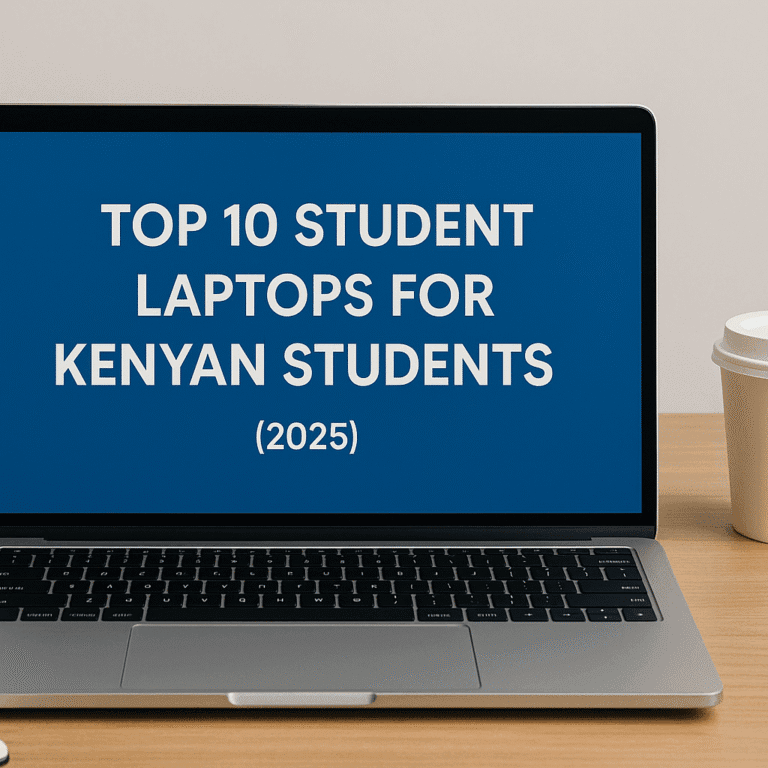You might be thinking that the future of education in Kenya is uncertain, but let us assure you that it is full of promise and exciting possibilities. In this article, we will explore the changing pedagogical approaches, the integration of technology in education, the emphasis on skills-based learning, and the efforts to enhance access to quality education. Through collaboration and partnerships, Kenya is poised to reform its education system and prepare its students for a successful future.
Key Takeaways
- Project-based learning and personalized instruction can foster critical thinking, problem-solving, and collaboration in the future of education in Kenya.
- Integration of technology in education, such as virtual classrooms and online resources, can enhance flexibility, convenience, and digital literacy skills for students.
- Emphasis on skills-based learning, including skills-based assessments and vocational training, can help students develop practical abilities, understand their strengths and areas for improvement, and enhance their employability.
- Enhancing access to quality education in Kenya requires effective teacher training, continuous professional development programs, adequate school facilities, and access to technology for students. Collaboration and partnerships between public and private sectors, local communities, and community-based organizations are crucial for education reform in Kenya.
Changing Pedagogical Approaches
As you explore the future of education in Kenya, it is crucial to examine the transformative impact of changing pedagogical approaches. One such approach is project-based learning, which has gained traction in recent years. Project-based learning involves students working on real-world projects that require critical thinking, problem-solving, and collaboration. It allows students to apply their knowledge and skills in a practical and meaningful way, fostering a deeper understanding of the subject matter.
Another important aspect of changing pedagogical approaches is personalized instruction. This approach recognizes that every student has unique learning needs and preferences. By tailoring instruction to individual students, educators can provide a more engaging and effective learning experience. Personalized instruction can take various forms, such as differentiated instruction, adaptive learning software, or one-on-one tutoring.
By embracing project-based learning and personalized instruction, the future of education in Kenya can be transformed. Students will become active learners, developing essential skills for the 21st century such as critical thinking, creativity, and collaboration. These pedagogical approaches also promote a student-centered approach to education, where the focus is on the individual learner rather than a one-size-fits-all curriculum.
With changing pedagogical approaches in place, the integration of technology in education becomes a natural progression. Technology can enhance project-based learning by providing access to vast resources and facilitating collaboration among students. It can also support personalized instruction through adaptive learning platforms and online tutoring programs. The integration of technology in education further enhances the transformative impact of changing pedagogical approaches, paving the way for a more dynamic and effective educational system in Kenya.
Integration of Technology in Education
Embrace the integration of technology in education to enhance the learning experience and prepare students for the future. In today's digital age, virtual classrooms and online resources have become valuable tools for both teachers and students. Virtual classrooms provide a platform for interactive and collaborative learning, breaking down the barriers of time and space. Students can access lectures, assignments, and discussions from anywhere, allowing for greater flexibility and convenience. Online resources, such as educational websites and digital textbooks, offer a wealth of information and multimedia content that can supplement traditional classroom materials. They provide students with a more engaging and interactive learning experience, catering to different learning styles and abilities. Furthermore, technology integration fosters digital literacy skills, which are essential for success in the modern world. By exposing students to digital tools and resources, they develop critical thinking, problem-solving, and communication skills that are highly valued in today's workforce. As we transition into the next section about emphasis on skills-based learning, it is important to recognize that technology plays a crucial role in equipping students with the necessary skills to thrive in an ever-evolving global landscape.
Emphasis on Skills-Based Learning
Integrate skills-based learning into the education system to equip students with the practical abilities needed for success in the future. By shifting the focus from rote memorization to hands-on learning, students can develop a wide range of skills that are essential for their personal and professional growth. Here are two key benefits of emphasizing skills-based learning:
- Skills-based assessment: Traditional exams often fail to accurately measure a student's true capabilities. Skills-based assessments, on the other hand, allow students to demonstrate their practical skills and knowledge in real-world scenarios. This not only provides a more comprehensive evaluation but also helps students understand their strengths and areas for improvement.
- Vocational training: Skills-based learning places a strong emphasis on vocational training, preparing students for specific careers. By offering practical courses and apprenticeships, students gain valuable hands-on experience in their chosen fields. This not only enhances their employability but also equips them with the skills and knowledge required to excel in their future professions.
Enhancing Access to Quality Education
To improve the education system in Kenya, you need to ensure that every student has access to quality education. This can be achieved through effective teacher training and infrastructure development.
Teacher training is crucial in ensuring that educators are equipped with the necessary skills and knowledge to deliver high-quality education. By investing in continuous professional development programs, teachers can stay updated with the latest teaching methodologies and best practices. This will enable them to create engaging and effective learning environments for their students. Additionally, specialized training in areas such as inclusive education and special needs teaching can further enhance the quality of education provided to all learners.
Infrastructure development plays a vital role in enhancing access to quality education. Adequate school facilities, such as classrooms, libraries, and laboratories, are necessary for students to engage in hands-on learning experiences. Access to technology, such as computers and internet connectivity, is also essential in preparing students for the digital age. Furthermore, investing in transportation systems can ensure that students from remote areas have the means to attend school regularly.
Collaboration and Partnerships for Education Reform
How can you effectively collaborate and form partnerships to drive education reform in Kenya? Collaboration and partnerships are essential for driving education reform in Kenya. By working together, both the public and private sectors can pool their resources and expertise to create innovative solutions and improve the quality of education in the country. Here are two key ways in which collaboration and partnerships can be fostered:
- Public-private partnerships:
- Encourage collaboration between government entities and private organizations to share knowledge, skills, and resources.
- Establish clear roles and responsibilities for each partner to ensure effective implementation of education reforms.
- Community engagement:
- Involve local communities, parents, and other stakeholders in the decision-making process to ensure their input is considered.
- Foster partnerships with community-based organizations to address the specific needs and challenges faced by different communities.
Frequently Asked Questions
How Does the Future of Education in Kenya Address the Issue of Student Motivation and Engagement?
In the future of education in Kenya, addressing student motivation and engagement is crucial. By integrating technology, students can have interactive and personalized learning experiences, which can enhance their motivation and engagement in the classroom.
What Measures Are Being Taken to Ensure That the Integration of Technology in Education Is Accessible to All Students, Regardless of Their Socioeconomic Background?
To ensure equity and bridge disparities, measures are being taken to make technology in education accessible to all students, regardless of their socioeconomic background. This includes providing infrastructure, devices, and internet connectivity.
How Will the Future Education System in Kenya Support Students With Special Needs and Ensure Their Inclusion in Mainstream Classrooms?
In the future, Kenya's education system will ensure that students with special needs are supported and included in mainstream classrooms. Inclusive classrooms will be established, providing the necessary resources and assistance for their education.
What Steps Are Being Taken to Bridge the Gap Between Theoretical Learning and Practical Skills Development in the Kenyan Education System?
To bridge the gap between theoretical learning and practical skills development in the Kenyan education system, steps are being taken to implement practical skills in classrooms and engage students with interactive teaching methods.
How Are Schools and Educational Institutions in Kenya Preparing Teachers for the Changing Pedagogical Approaches and the Integration of Technology in Education?
Schools and institutions in Kenya are preparing teachers for the changing pedagogical approaches and the integration of technology in education through teacher training programs and promoting classroom innovation.
Conclusion
In conclusion, the future of education in Kenya is promising and full of potential. With changing pedagogical approaches, integration of technology, emphasis on skills-based learning, and enhanced access to quality education, the education system is set to flourish. Just like a blooming flower in a vast garden, the future of education in Kenya will blossom, nurturing and shaping young minds for a brighter tomorrow.







